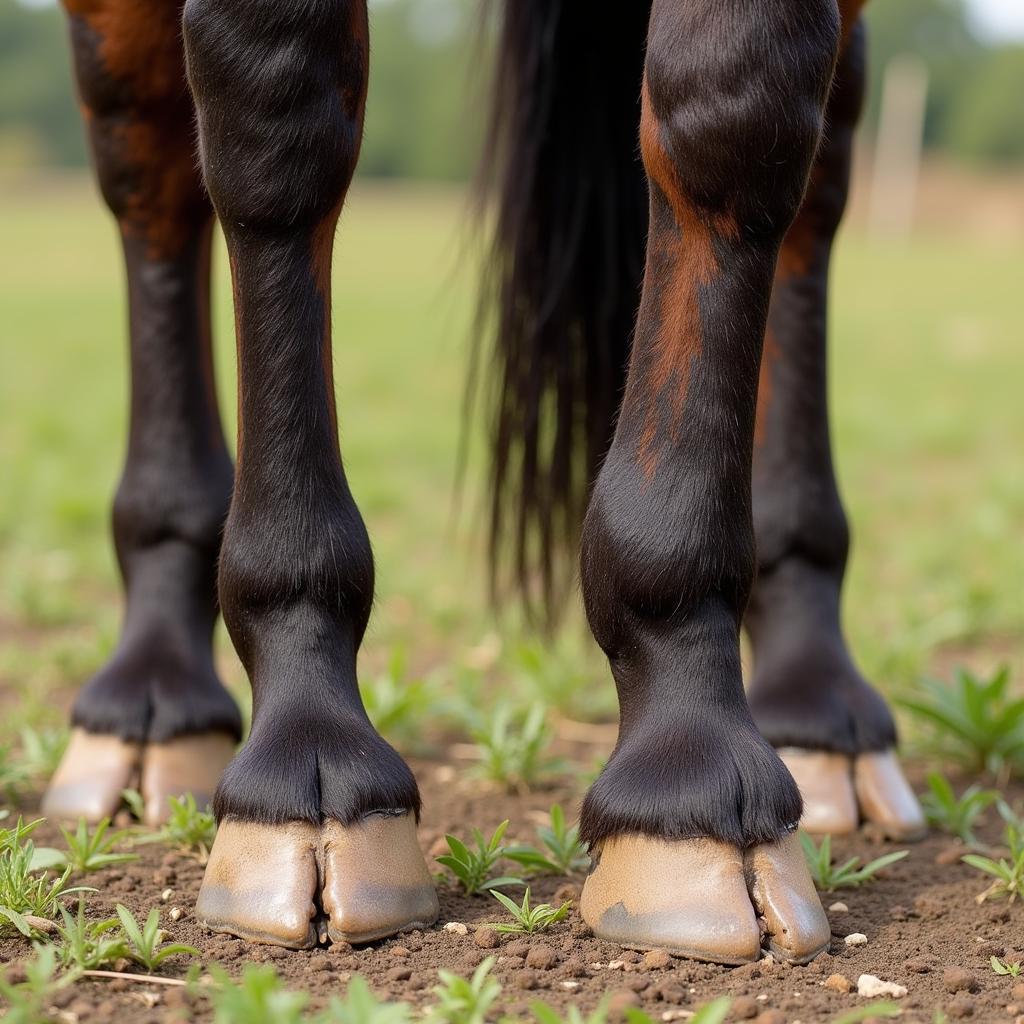The nutritional needs of horses are complex and varied, with specific requirements for their overall health and well-being. While most horse owners understand the importance of providing quality hay, fresh water, and a balanced feed program, one crucial aspect often overlooked is the significance of minerals, particularly what’s known as a “P Block For Horses.”
What is a P Block and Why Do Horses Need It?
A “p block” refers to a mineral block specifically formulated to provide horses with phosphorus (P), an essential mineral crucial for various bodily functions. Phosphorus works in tandem with calcium to support strong bones and teeth, muscle function, energy metabolism, and even nerve function.
Signs of Phosphorus Deficiency in Horses
Horses that lack sufficient phosphorus in their diets can exhibit a range of health issues. Recognizing the signs of deficiency is vital for early intervention and ensuring your horse’s well-being. Here are some key indicators to watch out for:
- Pica: One of the most telling signs of phosphorus deficiency is pica, a condition where horses develop an appetite for unusual substances like wood, dirt, or even feces. This behavior is driven by their instinctive attempt to find the missing mineral.
- Poor Performance: Phosphorus plays a critical role in energy metabolism, and a deficiency can lead to lethargy, weakness, and reduced athletic performance. If you notice your horse tiring easily or lacking their usual stamina, phosphorus deficiency could be a contributing factor.
- Bone Problems: In young, growing horses, phosphorus deficiency can lead to developmental bone diseases. In mature horses, it can contribute to weaker bones, increasing the risk of fractures and other bone-related problems.
- Dull Coat: A healthy, shiny coat is a good indicator of overall well-being in horses. Phosphorus deficiency can manifest as a dull, lackluster coat.
 Horse Showing Signs of Phosphorus Deficiency
Horse Showing Signs of Phosphorus Deficiency
Choosing the Right P Block for Your Horse
Not all p blocks are created equal, and selecting the appropriate type for your horse depends on several factors, including their age, activity level, and existing diet. Here’s a breakdown to guide your decision:
Types of P Blocks:
- White Salt Blocks: These are the most common type and generally provide a good source of both salt and phosphorus. However, the actual phosphorus content can vary, so checking the label is essential.
- Mineral Blocks with Added Phosphorus: Some mineral blocks are specifically formulated with higher levels of phosphorus, making them suitable for horses with increased requirements, such as pregnant or lactating mares or those in intense training.
- Loose Mineral Supplements: If your horse is a picky eater or requires a more tailored approach, loose mineral supplements can be added to their feed. This option allows for greater control over the dosage and combination of minerals provided.
Factors to Consider When Choosing a P Block:
- Current Diet: Analyze your horse’s existing diet, including their hay, grain, and any supplements, to determine their current phosphorus intake.
- Grazing Habits: Horses grazing on lush pastures might obtain some phosphorus from the forage. However, the phosphorus content in soil can vary significantly, so relying solely on pasture is not always sufficient.
- Life Stage: Young, growing horses, pregnant or lactating mares, and performance horses have higher phosphorus requirements than sedentary adult horses.
How to Provide a P Block to Your Horse
Once you’ve chosen the right p block, providing it to your horse is relatively straightforward. Here are a few tips:
- Introduce Gradually: If your horse is not accustomed to mineral blocks, introduce the p block gradually to prevent digestive upset. Offer it alongside their regular salt block initially.
- Monitor Intake: Observe your horse’s consumption of the p block. Excessive intake can indicate an underlying deficiency, while little to no interest might suggest they are getting sufficient phosphorus from other sources.
- Placement Matters: Place the p block in a clean, dry area easily accessible to your horse. Consider using a salt block holder for horses to keep it off the ground and prevent contamination.
Consulting Your Veterinarian
While providing a p block is generally beneficial for horses, consulting your veterinarian before making any significant dietary changes is always recommended. They can assess your horse’s specific needs, perform blood tests to check for deficiencies, and recommend the appropriate type and amount of phosphorus supplementation.
Beyond the P Block: Other Essential Minerals for Horses
While phosphorus is vital, it’s essential to remember that horses require a balanced intake of all essential minerals for optimal health. Along with phosphorus, pay close attention to their calcium, sodium, potassium, and magnesium intake.
Conclusion
A “p block for horses” is not just a random supplement; it’s a vital component of their overall health and well-being. By understanding the importance of phosphorus, recognizing signs of deficiency, and choosing the right type of p block for your equine companion, you can play a proactive role in ensuring they live a long, healthy, and active life. Remember, a balanced diet is the cornerstone of good health for horses, just as it is for humans.